5 purposes of academic writing serve as a foundation for scholars to communicate their research, ideas and insights to a diverse audience. These purposes include knowledge dissemination, critical analysis and evaluation, education and learning, problem-solving and innovation and building a scholarly community. Each purpose requires a specific set of skills, techniques and conventions and serves a unique function in promoting knowledge and shaping research across disciplines.
This text explores each purpose of academic writing in detail, their features, resources and examples. By understanding these purposes, we can enhance our writing skills, engage in scholarly discourse and contribute to the ongoing pursuit of knowledge in our fields.
So let’s dive into the world of academic writing and discover its diverse purposes.
5 purposes of academic writing:
- Knowledge dissemination
- Critical analysis and dissemination
- Education and learning
- Problem-solving and innovation
- Building a scholarly community
#1 Knowledge dissemination
One of 5 purposes of academic writing is to spread knowledge. In other words, academic writing acts as a channel through which scholars share their research findings, theories, and insights with a diverse audience. By engaging in academic writing, scholars contribute to advancing knowledge in their fields and foster innovation and understanding. This essay explores the significance of knowledge dissemination in academic writing and discusses various avenues through which it is achieved.
Knowledge dissemination databases
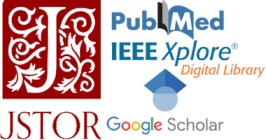
Online platforms and databases play a crucial role in facilitating the dissemination of academic knowledge. JSTOR provides access to over 12 million journal articles, books, images and primary sources in 75 disciplines. It is a repository of academic articles, journals and books, enabling researchers to explore various topics and access seminal works. Similarly, Google Scholar offers a comprehensive search engine for academic literature, allowing scholars to locate relevant research articles and publications easily. Other databases, such as PubMed for biomedical research or IEEE Xplore for engineering and technology, cater to specific disciplines, further improving the accessibility and dissemination of scholarly knowledge. These platforms democratise access to information, enabling researchers, students and practitioners to stay abreast of the latest developments and contribute to the ongoing discourse in their fields.
Academic knowledge dissemination texts and activities
Research papers and articles: Research papers are the basis of academic knowledge dissemination. They provide a structured format for presenting research findings, methodologies and interpretations. These papers undergo rigorous peer-review processes, ensuring the quality and validity of the research before publication. Scholars contribute to the collective body of knowledge in their fields through research papers and stimulate further inquiry and discussion.
Monographs: Monographs are academic books. They offer thorough analyses of specific topics or research areas, providing comprehensive insights into complex subjects. These scholarly works contribute to knowledge dissemination by incorporating existing research, presenting original findings and offering new perspectives on established theories and concepts. Monographs are valuable resources for researchers, students and professionals seeking understanding and expertise in a particular field.
Conferences: Academic conferences provide valuable knowledge dissemination and scholarly exchange opportunities. Scholars gather at conferences to present their research findings, engage in discussions and receive feedback from peers and experts. These events foster interdisciplinary collaboration, facilitate the exchange of ideas and promote the dissemination of modern research. Conferences also offer networking opportunities, allowing scholars to forge connections, establish collaborations, and explore potential research avenues.
How to express this purpose of academic writing in your text?
- Clearly express your research question, objectives and hypotheses to convey the purpose of your study.
- Provide a comprehensive review of relevant literature to establish the context and significance of your research.
- Present your methodology, data collection procedures and analysis techniques in a clear and reproducible manner.
- Discuss your findings objectively and critically, highlighting their implications and contributions to the field.
- Summarise the key insights and suggesting avenues for future research.
#2 Critical analysis and evaluation
Among the 5 purposes of academic writing, critical analysis and evaluation allow scholars to thoroughly examine existing literature, theories and methodologies. Through careful evaluation, scholars contribute to advancing knowledge and shaping research across disciplines.
Critical analysis and evaluation resources
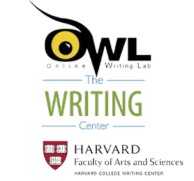
The Purdue Online Writing Lab Guide on Critical Reading is a valuable resource for scholars seeking to enhance their critical analysis skills. The guide offers strategies for evaluating texts, identifying key arguments and assessing the credibility and reliability of sources. Additionally, it provides tips for synthesising information, recognising bias and forming evidence-based arguments. In addition, the University of North Carolina at Chapel Hill Writing Center and the Writing Center at Harvard University offer similar guides and resources on critical reading and analysis. These online platforms provide scholars with tools and techniques to conduct detailed evaluations of academic literature, theories and methodologies. Therefore, they enhance the quality and rigour of their academic writing.
Critical analysis and evaluation texts
Literature reviews: Literature reviews are a primary vehicle for critical analysis and evaluation in academic writing. Scholars conduct comprehensive reviews of existing research and literature on a particular topic. They evaluate the strengths and weaknesses of previous studies, identify gaps and inconsistencies and propose avenues for further investigation. Literature reviews synthesise relevant literature and offer insights into the current state of knowledge in a field. This way, they guide future research and theoretical developments.
Argumentative essays: Argumentative essays provide scholars with a platform to critically evaluate main theories, challenge established norms and advance alternative perspectives. Scholars construct evidence-based arguments, using logical reasoning and systematic analysis to support their claims and refute opposing viewpoints. Argumentative essays foster intellectual discourse and encourage critical thinking, prompting readers to question assumptions, reconsider perspectives and engage in academic debate.
Theoretical papers: Theoretical papers contribute to critical analysis and evaluation by offering novel interpretations and frameworks within a field. Scholars critically engage with existing theories and methodologies, identifying limitations and proposing innovative approaches or hypotheses. Theoretical papers spark intellectual inquiry and theoretical development, aiding understanding and shaping the discourse within a discipline.
Peer reviews: Peer review is a key component of academic publishing, reinforcing the purpose of critical analysis and evaluation. Scholars submit their work to peer-reviewed journals, where it undergoes scrutiny and evaluation by experts in the field. Peer reviewers provide constructive feedback and critique, assessing the quality, validity and originality of the research. Through peer review, scholars refine their arguments, strengthen their methodology and contribute to advancing knowledge within their field.
How to express this purpose of academic writing in your text?
- Engage with existing literature by critically evaluating the previous studies’ strengths, weaknesses and limitations.
- Identify gaps or contradictions in the literature and justify the need for your research.
- Use logical reasoning and evidence-based arguments to support your analysis and interpretations.
- Acknowledge alternative viewpoints and address potential counterarguments in an objective manner.
- Conclude by synthesising your analysis and proposing implications for theory and practice.
#3 Education and learning
Education and learning is among the 5 purposes of academic writing. It helps students acquire foundational knowledge, theories and methodologies within their field of study. Through diverse forms of academic writing, students are empowered to deepen their understanding, hone critical thinking skills and prepare for success in both academic and professional pursuits.
Academic education and learning platforms
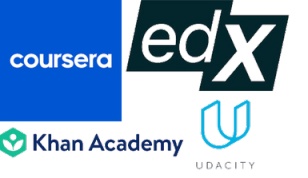
Numerous platforms and websites play pivotal roles in facilitating academic education and learning. For instance, Khan Academy offers various educational resources spanning various subjects, including mathematics, science, humanities and more. Khan Academy uses interactive lessons, instructional videos and practice exercises. These resources provide students with accessible and engaging learning experiences, complementing traditional classroom instruction.
Additionally, massive open online courses (MOOCs) platforms like Coursera, edX and Udacity offer courses taught by professors from renowned universities worldwide. These platforms allow students to explore diverse topics, access high-quality educational content, and earn certifications or degrees remotely. MOOCs leverage technology to democratise education, making it accessible to learners globally and fostering lifelong learning.
Furthermore, academic institutions often use learning management systems (LMS) such as Canvas, Blackboard or Moodle to deliver course materials, assignments and assessments online. These platforms enable educators to create interactive learning environments, facilitate communication and collaboration among students and track academic progress effectively. LMS platforms streamline educational processes and enhance the accessibility and flexibility of learning for students in both traditional and online settings.
Academic education and learning texts
Textbooks: Textbooks serve as indispensable resources for students, providing structured explanations, examples and exercises to convey foundational concepts, theories, and methodologies within specific disciplines. Textbooks written by subject matter experts guide students through fundamental principles and facilitate learning and comprehension.
Lecture notes: Lecture notes complement classroom instruction by summarising key points, elucidating complex concepts and providing additional context for students to deepen their understanding. Whether delivered in person or accessed digitally, lecture notes are valuable reference materials for students to review and reinforce learning.
Research papers and articles: Research papers and articles expose students to cutting-edge research within their field, encouraging them to critically evaluate findings, identify research gaps and formulate their research questions. By engaging with primary literature, students develop analytical skills, expand their knowledge base and gain insights into current advancements and debates in their discipline.
How to express this purpose of academic writing in your text?
- Structure your writing to facilitate comprehension and retention by organising information logically and using clear language.
- Provide definitions, explanations and examples to clarify complex concepts and theories for your audience.
- Use visuals such as tables, figures and diagrams to enhance understanding and illustrate key points.
- Include reflective questions or exercises to encourage active learning and critical thinking.
- Offer suggestions for further reading or exploration to support continuous learning.
#4 Problem-solving and innovation
Problem-solving and innovation is among 5 purposes of academic writing. It helps advancing knowledge and addressing real-world challenges across diverse disciplines. Scholars harness academic writing to dissect complex issues, propose innovative methodologies and develop solutions that drive progress and societal impact.
Problem-solving and innovation platforms
For instance, MIT OpenCourseWare and Harvard’s online learning platform offer valuable resources for problem-solving and innovation in academia. MIT OpenCourseWare provides free access to course materials from various disciplines, including lecture notes, assignments and supplemental resources. These materials often feature case studies, research papers and technical reports that showcase problem-solving approaches and innovative solutions developed by experts in the field. Similarly, Harvard’s online learning platform offers courses taught by faculty members from Harvard University, covering diverse topics and disciplines. These courses may include interactive modules, case studies and collaborative projects that foster problem-solving skills and encourage innovation among learners.
Academic problem-solving and innovation texts
Research papers: Research papers serve as primary vehicles for problem-solving and innovation in academia. They document the steps taken to investigate complex issues, collect data and derive insights. Scholars employ innovative methodologies, such as experimental designs and computational models, to address intricate problems and advance knowledge within their field.
Case studies: Case studies play a pivotal role in illustrating the application of theoretical frameworks to practical scenarios. For instance, they offer nuanced insights into the complexities of problem-solving. By analysing real-world examples, case studies identify challenges, explore solutions and draw lessons that inform future research and practice.
Technical reports: Technical reports present comprehensive analyses of research projects, unveiling breakthroughs and elucidating their potential implications for industries and societies. These reports document the process of problem-solving. From hypothesis formulation to experimentation and data analysis, they provide valuable insights into innovative solutions developed by scholars.
Textbooks: Textbooks distil foundational concepts, theories and methodologies within a specific discipline, providing students with the knowledge and tools necessary for problem-solving and innovation. Textbooks use structured explanations, examples and exercises. They guide students in developing critical thinking skills and applying theoretical insights to practical problems.
How to express this purpose of academic writing in your text?
- Clearly define the problem or challenge you are addressing and articulate its significance and relevance to your field.
- Describe your innovative approach or methodology for solving the problem, highlighting its potential impact and novelty.
- Present your findings and results in a structured and systematic manner, emphasising their practical implications.
- Discuss the strengths and limitations of your approach and propose recommendations for future research or application.
- Consider the broader implications of your work for advancing knowledge and fostering innovation in your field.
#5 Building a scholarly community
Building a scholarly community is a central purpose of academic writing. It is the foundation for collaboration, communication and intellectual exchange among scholars worldwide. Scholars engage in dialogue and share insights through academic journals, conferences and informal platforms.
Scholarly community platforms
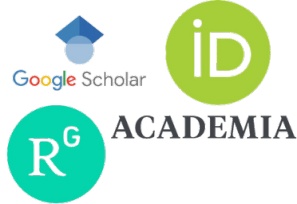
Platforms and websites play crucial roles in building scholarly communities by providing spaces for collaboration, communication and knowledge dissemination. For example, ResearchGate is a social networking site designed for researchers to share publications, connect with peers, and collaborate on projects. ResearchGate fosters scholarly communication by enabling researchers to showcase their work, engage in discussions, and discover relevant research. Additionally, Academia.edu and LinkedIn offer similar networking opportunities for scholars to connect, exchange ideas and build professional relationships.
Moreover, Google Scholar profiles and ORCID (Open Researcher and Contributor ID) are valuable tools for researchers to establish their academic identities and connect with peers. Google Scholar allows researchers to create public profiles showcasing their publications, citations and research interests, making it easier for others to find and follow their work. Similarly, ORCID provides unique identifiers for researchers, ensuring accurate attribution of their scholarly contributions and facilitating integration with various research platforms and databases. Finally, Reddit’s r/AskAcademia is a space for scholars to engage in discussions, seek advice and share insights. These platforms foster a sense of community among scholars by facilitating interactions and knowledge exchange beyond formal academic channels. These platforms play integral roles in building and sustaining scholarly communities by promoting collaboration, communication and recognition among researchers worldwide.
Academic texts helping build a scholarly community
Conference papers and presentations: Academic conferences provide valuable opportunities for scholars to present their research findings, exchange ideas and build professional networks. Conference papers and presentations help share new research and spark discussions. This way, they contribute to the building of scholarly communities within specific disciplines.
Academic journals: Academic journals are essential platforms for disseminating knowledge, fostering academic discourse and building scholarly communities. By publishing original research articles, reviews and other scholarly contributions, academic journals provide avenues for researchers to share their findings and engage with peers. Journals are crucial in shaping the discourse within specific fields and facilitating collaboration among scholars worldwide.
How to express this purpose of academic writing in your text?
- Engage with your audience by framing your writing in the context of existing scholarship and academic discourse.
- Acknowledge and cite relevant contributions from other scholars to demonstrate your awareness of the scholarly conversation.
- Contribute original insights or perspectives to enrich the ongoing dialogue within your academic community.
- Participate in academic conferences, seminars and workshops to share your research and network with peers.
- Foster collaboration and interdisciplinary exchange by seeking opportunities to engage with scholars from diverse backgrounds and perspectives.
How to prepare an academic text for publication?
Preparing academic texts for publication involves a series of essential editing and indexing services tailored to enhance their quality, coherence and accessibility across various formats. Editing and indexing services can also help ensure the text meets the 5 purposes of academic writing.
Developmental editing
Developmental editing focuses on the manuscript’s overall structure, organisation and content. For monographs, developmental editors assist authors in conceptualising the book, refining the argumentation and ensuring logical coherence. They provide substantive feedback on the manuscript’s structure, clarity and effectiveness in conveying ideas. For example, in a monograph exploring sociological theories, a developmental editor may help the author refine the conceptual framework, clarify key concepts and strengthen the argumentation to ensure alignment with disciplinary standards.
Line editing
Line editing involves refining the language, style and tone of at the sentence and paragraph levels. In journal articles, line editors focus on improving the clarity and readability of the text, ensuring that the language is precise and engaging for the intended audience. For instance, in a scientific research paper, line editors may clarify complex technical terminology, tighten complex sentences and ensure consistency in terminology usage throughout the manuscript.
Copyediting
Copyediting addresses grammar, punctuation, spelling and style issues to ensure accuracy and consistency in the manuscript. For example, in a conference paper, a copyeditor meticulously reviews the text for errors and inconsistencies, corrects grammar and punctuation errors and ensures adherence to style guidelines specified by the conference.
Proofreading
Proofreading involves a final manuscript review to catch any remaining errors or inconsistencies before publication. In book reviews, proofreaders check for typos, formatting errors and other minor mistakes that may have been overlooked during earlier stages of editing. They ensure that the review is polished and error-free, ready for publication.
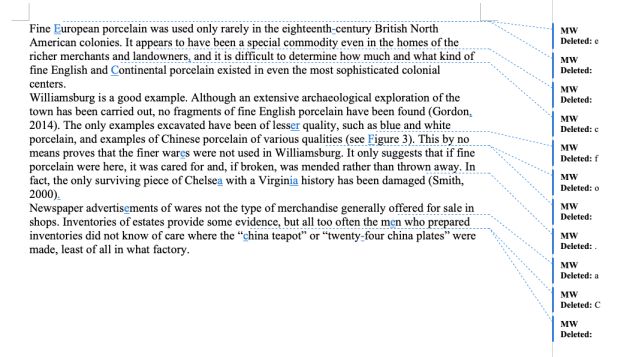
Indexing
Indexing services create detailed indexes that enhance the usability and accessibility of academic texts. In academic books, indexers analyse the content to identify key terms, concepts and references that warrant inclusion in the index. They organise this information into a structured index, enabling readers to easily locate specific topics, themes and references within the text. For example, in a monograph exploring environmental history, indexers may create an index that includes key terms such as ‘industrialisation,’ ‘pollution’ and ‘conservation efforts,’ allowing readers to navigate the text and locate relevant information efficiently.
In summary, a combination of developmental editing, line editing, copyediting, proofreading, and indexing services ensures that academic texts are polished, coherent, and accessible for publication across various formats, ranging from monographs and journal articles to conference papers and book reviews. Each service plays a distinct role in refining different aspects of the manuscript, ultimately contributing to the quality and impact of the final publication within the academic community.
Key takeaways
In conclusion, academic writing is essential for scholars to communicate their research, ideas and insights with a diverse audience. The 5 purposes of academic writing, including knowledge dissemination, critical analysis and evaluation, education and learning, problem-solving and innovation and building a scholarly community, play a crucial role in advancing knowledge and shaping research across disciplines. By understanding these purposes and using the resources and techniques discussed in this text, we can enhance our writing skills, engage in scholarly discourse and contribute to the ongoing pursuit of knowledge in our fields.
Contact me for a free sample edit of your academic text (and remember to use my early bird discount). I am an experienced editor working with non-fiction, academic and business texts. I can help prepare your text for publication, from a big-picture analysis to ensuring the correctness, accessibility and consistency of the language.


